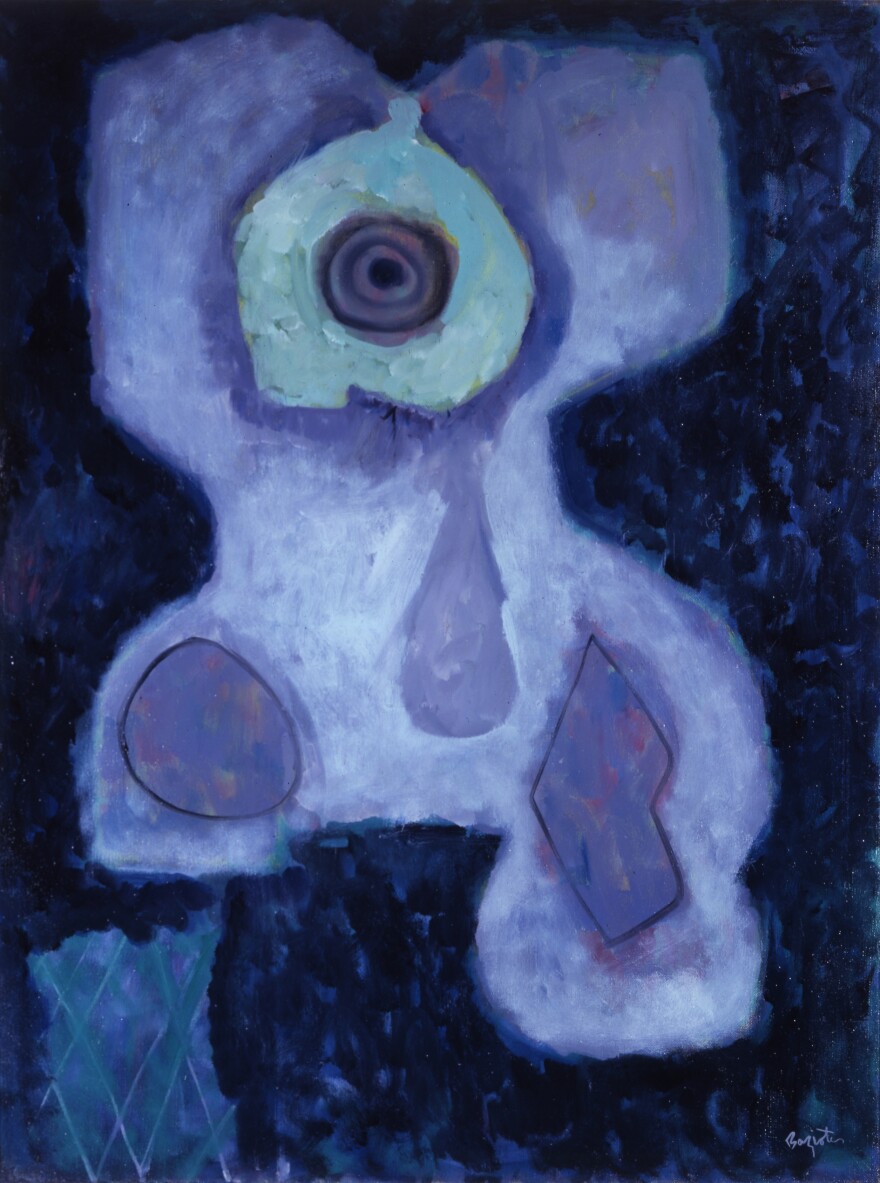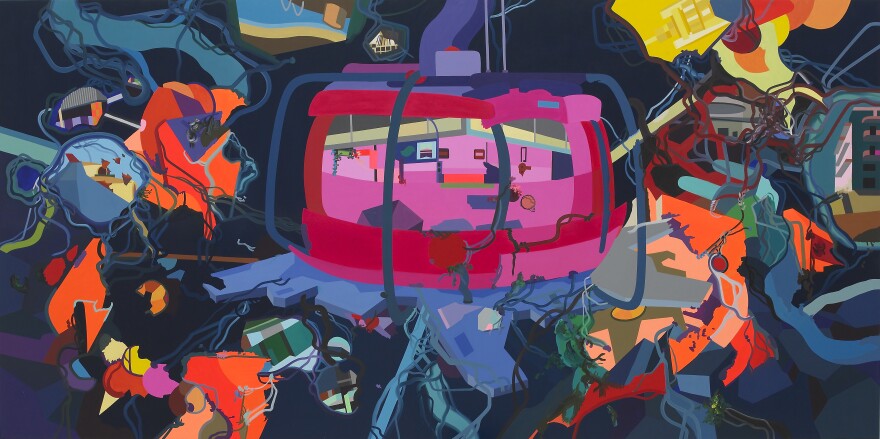The Mildred Lane Kemper Art Museum at Washington University is celebrating a decade at its permanent home with a first showing of works from its entire collection.
The museum will celebrate its 10th anniversary at the university with an event Friday that will highlight its paintings, sculpture and other art. Founded in 1881, the museum’s had a long focus on European art. But in the last decade it has shifted attention to better spotlight political art.
The 7 p.m. celebration will include a performance by St. Louis band Letters to Memphis and offer attendees portions of a cake created by artist Ebony G. Patterson in collaboration with Simone Faure, founder of La Patisserie Chouquette. The show will be open through mid-January.
St. Louis Public Radio asked museum director Sabine Eckmann to reflect on museum’s history as it is poised to grow. This interview has been edited for clarity.
St. Louis Public Radio: The Kemper’s 10th anniversary show is titled "Real / Radical / Psychological." What does that say about the museum?
Sabine Eckmann: We came up with these three terms "real, radical, psychological,” as leitmotifs which informed artistic practice during the period of modernization all the way to the present. We thought that all three notions would come together with the big Franz Ackerman painting, which will be hung in the atrium, where Ackerman struggles with what “real” means in a world that is completely infiltrated by digitization and globalization.
What changes have you implemented over the last 10 years at the museum?
Eckmann: The building afforded us to really try to implement a really rigorous exhibition program, which we were not able to do before we moved into the new building because of space limitations. Another major focus is on the permanent collection and publications and scholarship about the permanent collection. We implemented a series called “Spotlights” where scholars from the university, but also local scholars and visiting scholars, pick one work from the permanent collection and write a short essay on the work and present their findings to the public in a panel discussion. We’ve revisited those” Spotlights” and commissioned some more and combined them in a new publication which is called “Spotlights: Collected by the Mildred Lane Kemper Museum” (University of Chicago Press).
How does this exhibit capture the ethos of the museum?
Eckmann: This is sort of a form of exploring the collection to prepare ourselves or start conversation for how we will present the collection in the future. It really is an investigation of the permanent collection and also to show to the public here in St Louis how rich and deep this collection is.
Why is it important to have the museum focus on that intersection of art and politics?
Eckmann: I do think we always ask this question of how art matters to contemporary life and it’s part of our mission statement that we’re trying to address that, we’re trying to explain the human condition, the cultural condition, the political condition of the world in which we live. One topic that really penetrates the artworks between the 19th century to the 21st is this complicated relationship between art and politics.

How is Ebony G. Patterson’s work emblematic of the artists that interest the Kemper?
Eckmann: The 10th anniversary is obviously a party and you usually eat a cake when you celebrate something! So we wanted to do this, a cake is a celebratory moment and a moment of sharing something. But we wanted to have it also in relation to an artistic practice. We were looking at our alums and we found Ebony and got very interested in her work also because her work addresses issues, very pressing issues, of race and identity here in the United States. We started talking with her and she came up with this idea of this cake which will address gun violence in the United States today and specifically in relation to African American youth. And so we have this cake which is on one hand very political and at the same time we maintain the idea of sharing a cake and coming together in this kind of communal action.
Where would you next like to take the Kemper?
Eckmann: We are right now in the fortunate situation to be able to expand the physical footprint of the museum. We will in the future have more possibilities in the future to show more of the permanent collection while at the same time maintaining an interesting and we hope cutting edge exhibition program. We will continue to really focus on publications which are always lasting and will be documents of what we did. In addition the entire east campus here at the university will be rebuilt and the museum will have a much more visible site.
Follow Willis Ryder Arnold on Twitter @WillisRArnold
Send questions and comments about this story to feedback@stlpublicradio.org.
Support Local Journalism
St. Louis Public Radio is a non-profit, member-supported, public media organization. Help ensure this news service remains strong and accessible to all with your contribution today.






